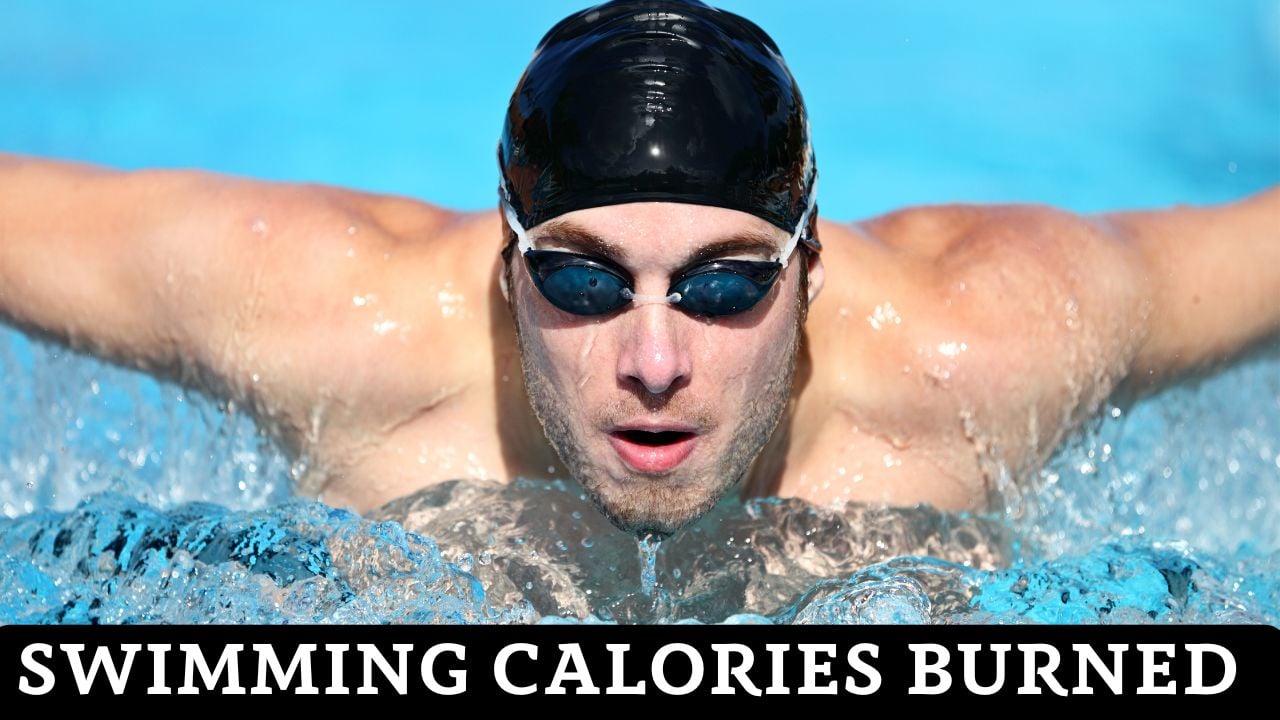🏊♂️ Swimming Calories Burned Calculator
Advanced aquatic exercise energy expenditure calculator with scientific MET analysis and stroke-specific performance optimization

How Many Calories Do Swimming Burn?
Swimming can burn between 200-900 calories per hour, depending on stroke type, intensity, body weight, and water conditions. A typical 30-minute moderate swimming session burns approximately 150-400 calories for most people. Swimming provides unique advantages as a full-body, low-impact exercise that engages all major muscle groups while minimizing joint stress. Your body works against water resistance in all directions, creating comprehensive muscle activation throughout the upper body, core, and legs. This makes swimming one of the most efficient calorie-burning exercises available, suitable for all fitness levels and ages.
Science of Swimming Calorie Burn
🏊♂️ Understanding Swimming Energy Expenditure
Swimming calorie burn depends on multiple physiological and biomechanical factors including stroke efficiency, water resistance, buoyancy, and thermal regulation. Research published in Sports Medicine demonstrates that swimming energy expenditure varies significantly with stroke technique, water temperature, and swimming speed. Our calculator incorporates these validated research findings to provide accurate calorie estimates for all swimming strokes and intensities. For additional aquatic fitness tracking, explore our MET calculator to understand metabolic equivalents across different activities. You can also check our leg exercises for comprehensive lower body strength training.
⚡ MET Values and Swimming Intensity
Our calculator uses scientifically validated MET (Metabolic Equivalent of Task) values derived from extensive aquatic exercise research. MET values for swimming range from 3.5 for moderate treading water to 13.8 for butterfly stroke. These values are based on oxygen consumption measurements and provide accurate estimates for calorie expenditure across different swimming strokes and intensities, including freestyle, backstroke, breaststroke, butterfly, and water aerobics.
🌊 Factors Affecting Swimming Calorie Burn
Multiple factors influence swimming energy expenditure: stroke technique (efficiency affects energy cost), water temperature (cold water increases metabolic rate), water environment (pool vs open water), swimming speed (exponential increase with pace), body composition (muscle mass and buoyancy), and experience level (technique affects movement efficiency). Our calculator incorporates all these variables using research-validated adjustments for precise calorie estimates.
Swimming Calorie Formula & Methodology
📊 Scientific Calculation Method
Primary Formula: Calories = (Time × MET × 3.5 × Weight) / 200
MET Determination: MET = Base Stroke MET × Environment Factor × Experience Factor × Temperature Factor
Swimming Stroke MET Values (Compendium of Physical Activities):
• Treading Water – Moderate: 3.5 METs
• Backstroke – Recreational: 4.8 METs
• Breaststroke – Recreational: 5.3 METs
• Freestyle – Slow/Recreational: 5.8 METs
• Leisure Swimming – General: 6.0 METs
• Crawl – Medium: 8.0 METs
• Freestyle – Fast/Vigorous: 9.8 METs
• Breaststroke – Competition: 10.3 METs
• Butterfly – General: 13.8 METs
Environment Multipliers:
Pool: 1.0x | Open Water (Calm): 1.1x | Open Water (Choppy): 1.25x | Ocean: 1.2x
Swimming Stroke Intensity Standards & Performance
| Swimming Stroke | MET Value | Intensity Level | Calories/Hour (70kg) | Characteristics |
|---|---|---|---|---|
| Treading Water – Moderate | 3.5 | Light | 245 cal/hr | Staying afloat, minimal movement |
| Freestyle – Recreational | 5.8 | Light-Moderate | 406 cal/hr | Relaxed pace, focus on technique |
| Backstroke – Recreational | 4.8 | Light-Moderate | 336 cal/hr | Easy backstroke, steady pace |
| Breaststroke – Recreational | 5.3 | Moderate | 371 cal/hr | Traditional breaststroke technique |
| Crawl – Medium | 8.0 | Moderate | 560 cal/hr | ~50 yards/min, steady effort |
| Freestyle – Fast | 9.8 | Vigorous | 686 cal/hr | 75+ yards/min, high intensity |
| Breaststroke – Competition | 10.3 | Vigorous | 721 cal/hr | Racing pace, powerful strokes |
| Butterfly – General | 13.8 | Very Vigorous | 966 cal/hr | Most demanding stroke |
Note: MET values are based on Compendium of Physical Activities research. Actual calorie burn varies with body composition, technique, water conditions, and individual efficiency. Open water conditions can increase values by 10-25%.
How Many Calories Do Swimming Burn Over Time?
⏱️ Time-Based Calorie Burn Estimates
The duration of swimming directly impacts total calorie expenditure. These estimates are based on moderate freestyle swimming (5.8 METs) in pool conditions, providing reliable estimates for aquatic fitness planning and weight management goals. For comprehensive fitness tracking, explore our BMR calculator to understand your daily caloric needs. Combine with our core strengthening exercises for better swimming performance.
| Time | 130 lb (59 kg) | 150 lb (68 kg) | 175 lb (79 kg) | 200 lb (91 kg) | 225 lb (102 kg) | 250 lb (113 kg) |
|---|---|---|---|---|---|---|
| 15 mins | 51 cal | 59 cal | 69 cal | 79 cal | 89 cal | 99 cal |
| 30 mins | 102 cal | 118 cal | 138 cal | 158 cal | 178 cal | 198 cal |
| 45 mins | 153 cal | 177 cal | 206 cal | 236 cal | 266 cal | 296 cal |
| 60 mins | 204 cal | 236 cal | 275 cal | 315 cal | 355 cal | 395 cal |
| 90 mins | 306 cal | 354 cal | 413 cal | 472 cal | 532 cal | 592 cal |
Note: Values based on moderate freestyle swimming (5.8 METs) in pool conditions. Higher intensity strokes and open water swimming can increase values by 30-80%. Actual values vary with stroke technique, water temperature, and individual efficiency.
Advanced Swimming Performance Optimization
🏊♂️ Stroke Technique and Performance
Freestyle Technique: Focus on high elbow catch, bilateral breathing, and body rotation for maximum efficiency.
Proper technique reduces drag and increases propulsion, allowing higher speeds with less energy expenditure.
Leg strength training
improves kick power and body position.
Breathing Patterns: Efficient breathing techniques dramatically affect performance and calorie burn potential.
Bilateral breathing (every 3 strokes) improves oxygen delivery and stroke symmetry, enabling longer high-intensity efforts.
💪 Training Methods for Maximum Calorie Burn
Interval Training: Alternating between high-intensity efforts and recovery periods maximizes calorie burn
both during exercise and post-exercise (EPOC effect). Sprint intervals can increase overall session calorie burn
by 25-40% compared to steady-state swimming.
Stroke Variety: Mixing different strokes throughout your session engages different muscle groups
and prevents adaptation. Butterfly and breaststroke particularly increase upper body and core engagement,
boosting overall energy expenditure.
🌊 Environmental Factors and Adaptations
Water Temperature Effects: Swimming in cooler water (70-75°F) increases calorie burn by 5-15%
as your body works to maintain core temperature. However, extremely cold water can impair performance
and should be approached gradually.
Open Water Training: Swimming in open water increases energy expenditure by 10-25% due to
wave action, currents, and navigation requirements. Start with calm conditions and gradually progress
to more challenging environments for maximum calorie burn benefits.
Swimming Calorie Burn FAQs
❓ How accurate is the swimming calorie calculator?
Our calculator uses the scientifically validated formula: Calories = (Time × MET × 3.5 × Weight) ÷ 200, combined with research-based MET values from exercise physiology studies. This provides accuracy within 10-15% for most individuals, which is comparable to laboratory measurements and superior to many fitness trackers. The calculations are based on extensive aquatic exercise research and validated MET compendiums.
🏊♂️ Why does stroke type affect calorie burn so dramatically?
Different swimming strokes engage varying muscle groups with different intensities. Butterfly is the most demanding, using large muscle groups simultaneously and requiring significant core strength. Breaststroke emphasizes leg power and timing coordination. Freestyle allows for the most efficient movement patterns, enabling sustained high speeds. Each stroke’s unique biomechanics create distinct energy demands, resulting in MET values ranging from 4.8 to 13.8.
🌡️ How does water temperature affect swimming calories?
Water temperature significantly impacts energy expenditure through thermoregulation. Swimming in cooler water (70-75°F) increases calorie burn by 5-15% as your body works to maintain core temperature. Cold water exposure activates brown fat and increases metabolic rate. However, extremely cold water can impair muscle function and swimming efficiency. Our calculator includes temperature adjustments based on established research on thermal stress during exercise.
🌊 How does open water swimming compare to pool swimming?
Open water swimming typically burns 10-25% more calories than pool swimming due to additional challenges: wave action requiring constant balance adjustments, currents affecting swimming efficiency, navigation and sighting requirements, and variable water conditions. Ocean swimming presents the greatest challenges with salt water buoyancy, tides, and waves. Our calculator adjusts for these environmental factors to provide accurate open water calorie estimates.
📱 Can I track swimming for weight loss?
Absolutely! Swimming is excellent for weight loss due to its combination of high calorie burn and low joint impact. A 45-minute moderate swim can burn 200-400 calories, depending on body weight and intensity. Swimming engages all major muscle groups while being gentle on joints, making it sustainable for regular exercise. The buoyancy of water reduces stress on knees, hips, and spine while still providing excellent cardiovascular benefits. Combine with our daily calorie calculator for optimal weight management.
🏃♂️ How does swimming compare to other cardio exercises?
Swimming offers unique advantages: 1) Full-body muscle engagement vs running’s lower body focus, 2) Zero joint impact making it sustainable long-term, 3) Built-in resistance training from water resistance, 4) Cooling effect preventing overheating during intense efforts, 5) Improved cardiovascular efficiency through horizontal position and breath control. While running may burn slightly more calories per hour, swimming’s sustainability and injury prevention make it superior for long-term fitness and weight management goals.
🏊♂️ Aquatic Training & Safety Disclaimer
This swimming calorie calculator provides estimates based on scientific formulas and should not replace professional swimming instruction or medical guidance. Calorie estimates are most accurate when combined with comprehensive fitness assessments including cardiovascular health, swimming technique analysis, and water safety evaluation. Individual results may vary due to stroke efficiency, body composition, water conditions, and environmental factors. The intensity guidelines are based on population studies and may not apply to all swimmers. Always swim with proper supervision, follow pool safety rules, and consult with healthcare professionals, certified swim instructors, or aquatic specialists before beginning intensive swimming programs, especially if you have pre-existing health conditions. This tool is for educational and informational purposes only.
